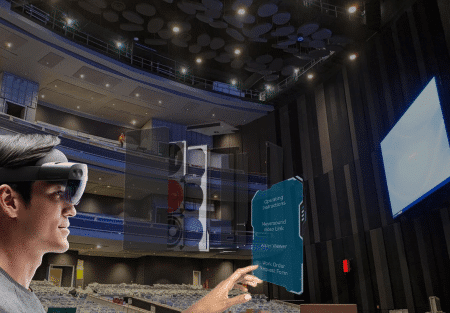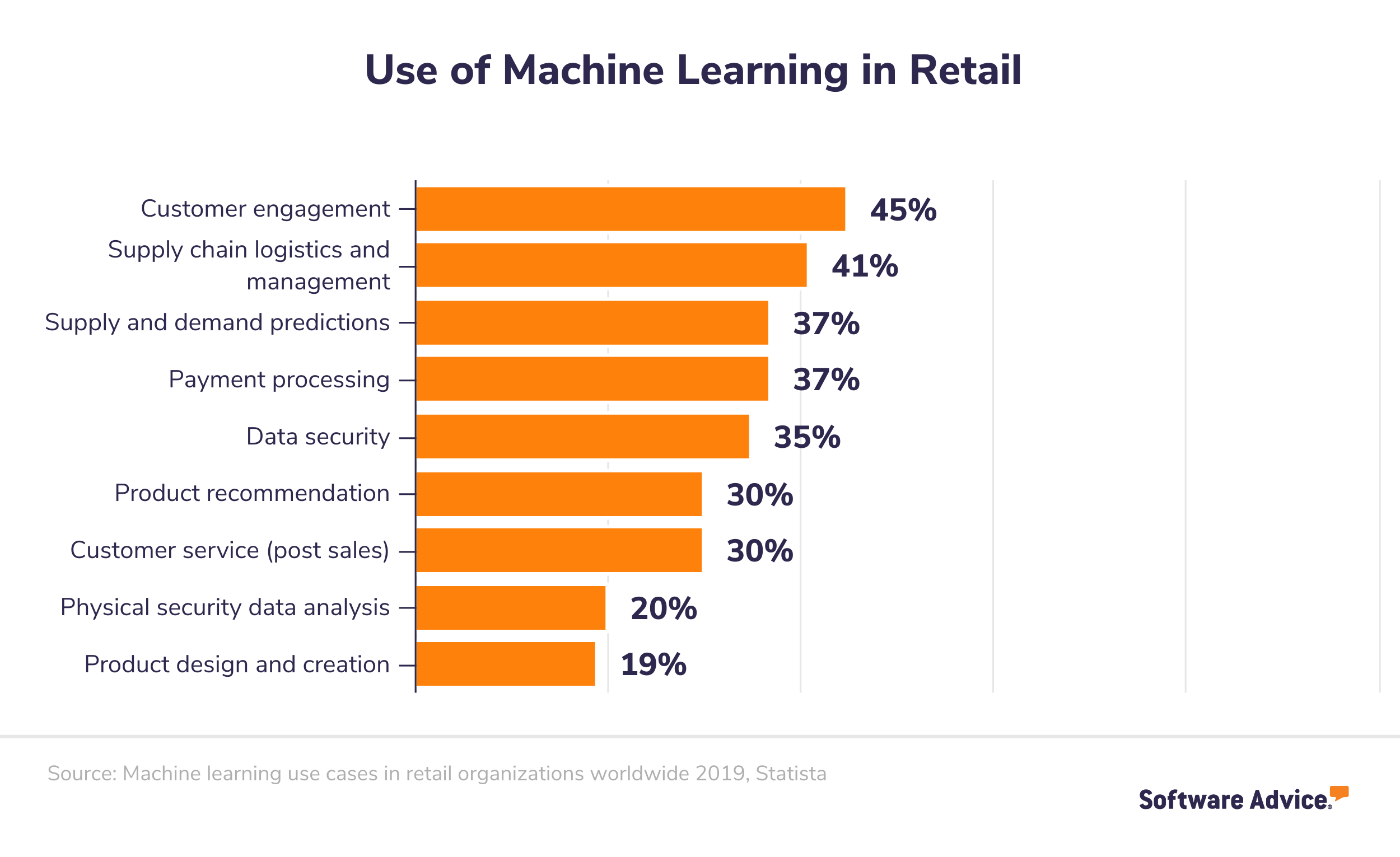
Applied machine learning allows you to use ML to solve real-world problems. ML is used to detect patterns and data in the real world. For example, Netflix recognizes sci-fi movie patterns. This could be used in other applications to detect cancer in mammograms. This is what we call "nearfield" machine-learning. Here are some examples to illustrate how ML can solve problems. What are the best machine learning applications?
Applications of machine learning
The rise of large datasets has fueled the interest in Machine Learning. Machine learning algorithms can be used for a variety of purposes, such as classification, regression, clustering, and dimension reduction. Machine Learning has proved to be superior in many areas, including image classification and speech recognition. Machine Learning is even used to power online services like Netflix, which has over 100 million subscribers. Here are five of Machine Learning’s most widely used Applications.
Machine learning can be used in many areas, including the enterprise. This technology is frequently used in manufacturing systems, enterprise finance, and other areas. Machine learning can speed up software testing. This can result in faster and better-designed software. Machine learning is also used in decision support. This allows machine learning to analyze multiple scenarios and then make recommendations based upon the results. It can also be used for detecting workplace safety violations. Although there are certain use cases that are very specific, many companies have begun to implement machine learning technology.

Machine learning tools are available
Machine learning can be applied using a variety of tools. Mallet, a Java-based package, is a framework for entity extraction, document classification, and document classification in text documents. Shogun, a C++ Open Source Library with interfaces to many different languages, is another useful tool. Keras, a sophisticated neural network API, offers a complete managed environment to create and deploy ML model.
Another machine-learning tool is NumPy. It replaces Numeric. It provides multidimensional arrays, matrices, and linear algebra capabilities, and supports numeric expressions, matrix operations, and broadcasting functions. NumPy also offers higher-order mathematics functions, including those that are used in scientific computations. This software allows for the creation of machine learning models by using multiple inputs.
Methods of applying machine learning on a problem
Machine learning is a broad field with many applications. A mobile app may be used to sell food or change the breed of dog a pet store sells. This is why it is important to have the most current information. Many businesses have unique features like prices or service areas which makes the data more relevant. Also, data must be labeled in order to allow machines to understand them.
Machine learning has been used in many areas of materials science. Table 1 shows the predictions of machine learning algorithms on a wide variety of properties. These properties are a good example of the current challenges in computational material science and possible solutions. Machine learning has been used to map composition areas in many studies within just a few CPU-hours. Read on to learn more about machine-learning in materials science.

Purdue University's Applied Machine Learning Bootcamp
Simplilearn’s Applied Machine Learning online course was created in collaboration with Purdue University. It is a virtual Bootcamp that lasts four months. Top-notch education and mentorship are available to students. Course content covers the basics of ML/data science. Students can also participate in hands-on activities and take virtual classes. Instructors share hands-on experiences and provide a global perspective about machine learning.
Faculty, graduate students and industry professionals participated in the boot camp. Collaborations between disciplines emerged from the focus on causal machinelearning techniques and Big Data Observational Data. The Purdue-IBM partnership brings academic excellence and industry-aligned content to the program. Because of this, the class sizes are small enough to allow for maximum interaction with students and provide hands-on experience. External speakers will contribute new findings and discuss emerging technologies and challenges in the field.
FAQ
Are there risks associated with AI use?
Of course. There will always be. Some experts believe that AI poses significant threats to society as a whole. Others argue that AI is not only beneficial but also necessary to improve the quality of life.
AI's potential misuse is the biggest concern. If AI becomes too powerful, it could lead to dangerous outcomes. This includes autonomous weapons and robot rulers.
AI could also replace jobs. Many people worry that robots may replace workers. However, others believe that artificial Intelligence could help workers focus on other aspects.
For example, some economists predict that automation may increase productivity while decreasing unemployment.
What are the potential benefits of AI
Artificial Intelligence is a revolutionary technology that could forever change the way we live. It's already revolutionizing industries from finance to healthcare. It's also predicted to have profound impact on education and government services by 2020.
AI is being used already to solve problems in the areas of medicine, transportation, energy security, manufacturing, and transport. The possibilities for AI applications will only increase as there are more of them.
What is the secret to its uniqueness? It learns. Computers can learn, and they don't need any training. Instead of learning, computers simply look at the world and then use those skills to solve problems.
AI is distinguished from other types of software by its ability to quickly learn. Computers can read millions of pages of text every second. They can recognize faces and translate languages quickly.
It can also complete tasks faster than humans because it doesn't require human intervention. It can even surpass us in certain situations.
2017 was the year of Eugene Goostman, a chatbot created by researchers. This bot tricked numerous people into thinking that it was Vladimir Putin.
This is a clear indication that AI can be very convincing. Another benefit of AI is its ability to adapt. It can be trained to perform new tasks easily and efficiently.
Businesses don't need to spend large amounts on expensive IT infrastructure, or hire large numbers employees.
What are some examples AI apps?
AI can be applied in many areas such as finance, healthcare manufacturing, transportation, energy and education. Here are a few examples.
-
Finance - AI has already helped banks detect fraud. AI can spot suspicious activity in transactions that exceed millions.
-
Healthcare – AI is used for diagnosing diseases, spotting cancerous cells, as well as recommending treatments.
-
Manufacturing – Artificial Intelligence is used in factories for efficiency improvements and cost reductions.
-
Transportation - Self-driving vehicles have been successfully tested in California. They are currently being tested around the globe.
-
Utilities use AI to monitor patterns of power consumption.
-
Education - AI can be used to teach. Students can use their smartphones to interact with robots.
-
Government - AI is being used within governments to help track terrorists, criminals, and missing people.
-
Law Enforcement – AI is being used in police investigations. Databases containing thousands hours of CCTV footage are available for detectives to search.
-
Defense - AI systems can be used offensively as well defensively. An AI system can be used to hack into enemy systems. For defense purposes, AI systems can be used for cyber security to protect military bases.
Is AI good or bad?
AI can be viewed both positively and negatively. AI allows us do more things in a shorter time than ever before. Programming programs that can perform word processing and spreadsheets is now much easier than ever. Instead, we just ask our computers to carry out these functions.
People fear that AI may replace humans. Many believe robots will one day surpass their creators in intelligence. This may lead to them taking over certain jobs.
How does AI work
To understand how AI works, you need to know some basic computing principles.
Computers save information in memory. Computers work with code programs to process the information. The code tells computers what to do next.
An algorithm is a sequence of instructions that instructs the computer to do a particular task. These algorithms are typically written in code.
An algorithm could be described as a recipe. A recipe might contain ingredients and steps. Each step might be an instruction. One instruction may say "Add water to the pot", while another might say "Heat the pot until it boils."
What will the government do about AI regulation?
The government is already trying to regulate AI but it needs to be done better. They must ensure that individuals have control over how their data is used. They must also ensure that AI is not used for unethical purposes by companies.
They also need ensure that we aren’t creating an unfair environment for different types and businesses. For example, if you're a small business owner who wants to use AI to help run your business, then you should be allowed to do that without facing restrictions from other big businesses.
Statistics
- In 2019, AI adoption among large companies increased by 47% compared to 2018, according to the latest Artificial IntelligenceIndex report. (marsner.com)
- More than 70 percent of users claim they book trips on their phones, review travel tips, and research local landmarks and restaurants. (builtin.com)
- The company's AI team trained an image recognition model to 85 percent accuracy using billions of public Instagram photos tagged with hashtags. (builtin.com)
- By using BrainBox AI, commercial buildings can reduce total energy costs by 25% and improves occupant comfort by 60%. (analyticsinsight.net)
- In the first half of 2017, the company discovered and banned 300,000 terrorist-linked accounts, 95 percent of which were found by non-human, artificially intelligent machines. (builtin.com)
External Links
How To
How to set Alexa up to speak when charging
Alexa, Amazon's virtual assistant, can answer questions, provide information, play music, control smart-home devices, and more. You can even have Alexa hear you in bed, without ever having to pick your phone up!
Alexa can answer any question you may have. Just say "Alexa", followed up by a question. She will give you clear, easy-to-understand responses in real time. Alexa will continue to learn and get smarter over time. This means that you can ask Alexa new questions every time and get different answers.
Other connected devices can be controlled as well, including lights, thermostats and locks.
Alexa can adjust the temperature or turn off the lights.
Set up Alexa to talk while charging
-
Open Alexa App. Tap Settings.
-
Tap Advanced settings.
-
Select Speech Recognition
-
Select Yes, always listen.
-
Select Yes, wake word only.
-
Select Yes, then use a mic.
-
Select No, do not use a mic.
-
Step 2. Set Up Your Voice Profile.
-
Select a name and describe what you want to say about your voice.
-
Step 3. Step 3.
Say "Alexa" followed by a command.
You can use this example to show your appreciation: "Alexa! Good morning!"
Alexa will respond if she understands your question. Example: "Good Morning, John Smith."
Alexa won’t respond if she does not understand your request.
-
Step 4. Restart Alexa if Needed.
If you are satisfied with the changes made, restart your device.
Notice: If you have changed the speech recognition language you will need to restart it again.